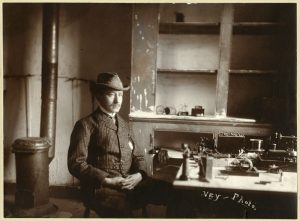Archival Moment
JANUARY 1, 1915
 On January 1, 1915 Governor Walter Edward Davidson of Newfoundland made reference in his private diary to the tradition of the New Year’s Day Levee in St. John’s. He wrote
On January 1, 1915 Governor Walter Edward Davidson of Newfoundland made reference in his private diary to the tradition of the New Year’s Day Levee in St. John’s. He wrote
“We received from 3:00 – 6:00 o’clock. It has been an ancient custom for men to call on their lady friends on New Year’s Day. It is dying out but 236 called here. It is usual for them to call also on the Roman Catholic Archbishop and the Anglican Bishop .”
The “ancient custom for men to call on their lady friends on New Year’s Day” that Davidson referred to in his diary has disappeared in Newfoundland but the tradition of the levee has survived.
This levee was a reception that was held early in the afternoon of New Years Day, typically at the residence of the host. Attending these levees was an annual ritual in the town.
The first recorded Levée in Canada was held on January 1st, 1646 in the Château St. Louis by Charles Huault de Montmagny, Governor of New France (later Québec). In addition to shaking hands and wishing a Happy New Year to citizens presenting themselves at the Château, the Governor informed guests of significant events in the Mother Country, as well as the state of affairs within the colony. This tradition is carried on today within The Commonwealth in the form of The Queen’s New Year’s Message.
The Levée tradition was continued by British Colonial Governors in Canada, and subsequently by Governors General and Lieutenant Governors, and continues to the present day.
 INVITATION: Her Honour The Honourable Judy M. Foote, Lieutenant Governor of Newfoundland and Labrador and His Honour Howard W. Foote, invite you to join them at Government House for the traditional New Year’s Levee. Tuesday, January 1, 2019 from 2:30 to 4:30 pm.
INVITATION: Her Honour The Honourable Judy M. Foote, Lieutenant Governor of Newfoundland and Labrador and His Honour Howard W. Foote, invite you to join them at Government House for the traditional New Year’s Levee. Tuesday, January 1, 2019 from 2:30 to 4:30 pm.
Archival Collection: At the Rooms Provincial Archives take some time to read Governor Walter Davidson’s Private Diary. MG 136.5











